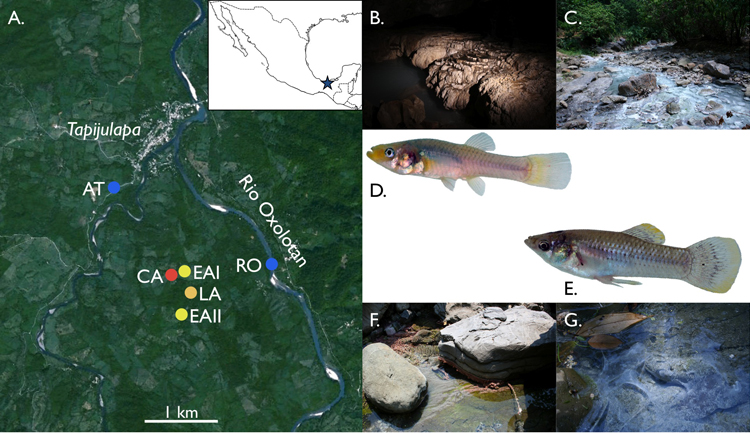Plants and other photoautotrophs are generally considered to be the base of food webs. Organisms in habitats that lack light, such as caves, usually rely nutrients washed in form surface ecosystems for survival. In a sulfur cave in southern Mexico (Cueva del Azufre), however, chemolithotrophic bacteria are using hydrogen sulfide and other sulfur species, instead of sunlight, to produce energy. A recent study published in Ecology now showed that these bacteria form the base of the food web, just as plant do in surface environments. Analysis of gut contents and stable isotope ratios of tissues indicated that sulfur-oxidizing bacteria are the predominant source of energy supporting the cavefish Poecilia mexicana. The results provide evidence of a vertebrate deriving its organic carbon and nitrogen from in situ chemoautotrophic production and highlight the importance of alternative energy production sources supporting animals in extreme environments.

